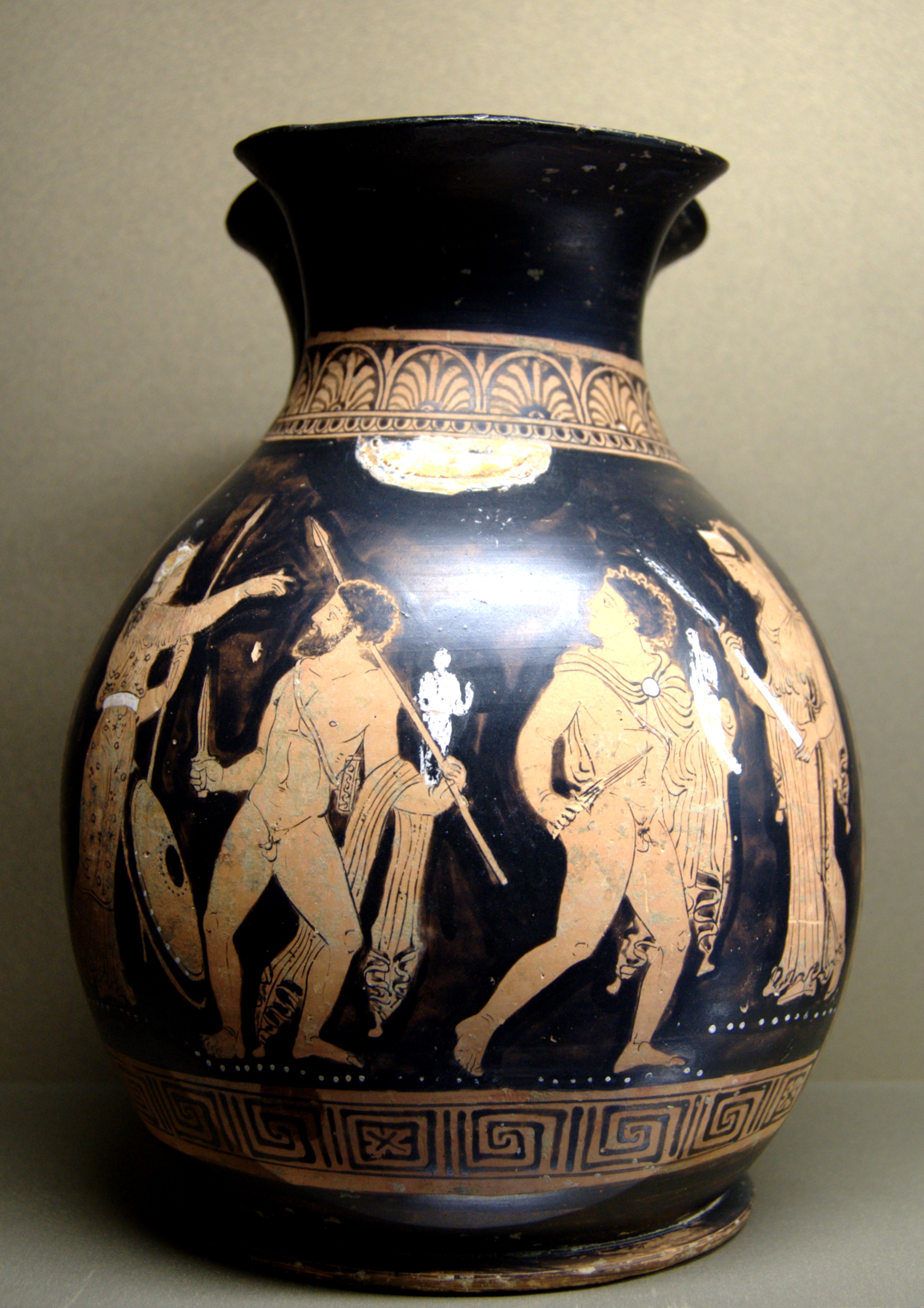Ilioupersis Painter on:
[Wikipedia]
[Google]
[Amazon]
 The Ilioupersis Painter (also spelled ''Iliupersis'') was an Apulian
The Ilioupersis Painter (also spelled ''Iliupersis'') was an Apulian
Works by Ilioupersis Painter
at the British Museum *
Work by the Iliupersis Painter
at the Art Institute of Chicago {{DEFAULTSORT:Ilioupersis Painter 4th-century BC deaths Ancient Greek vase painters Anonymous artists of antiquity People from Apulia Year of birth unknown
 The Ilioupersis Painter (also spelled ''Iliupersis'') was an Apulian
The Ilioupersis Painter (also spelled ''Iliupersis'') was an Apulian vase painter
Ancient Greek pottery, due to its relative durability, comprises a large part of the archaeological record of ancient Greece, and since there is so much of it (over 100,000 painted vases are recorded in the Corpus vasorum antiquorum), it has ex ...
. His works are dated to the second quarter of the 4th century BC.
The Ilioupersis Painter begins to the beginning of the middle phase of Apulian vase painting, and the start of the so-called Ornate Style. His conventional name is derived from his name vase
In classical archaeology, a name vase is a specific "vase"In the study of ancient Greek pottery a "vase" is a general term covering all pottery shapes. whose painter's name is unknown but whose workshop style has been identified. The painter is co ...
, a volute ''krater'' in the British Museum
The British Museum is a public museum dedicated to human history, art and culture located in the Bloomsbury area of London. Its permanent collection of eight million works is among the largest and most comprehensive in existence. It docum ...
with depictions of the ''iloupersis'' (the sack of Troy). He followed the tradition of the Dijon Painter
Dijon (, , ) (dated)
* it, Digione
* la, Diviō or
* lmo, Digion is the prefecture of the Côte-d'Or department and of the Bourgogne-Franche-Comté region in northeastern France. the commune had a population of 156,920.
The earlies ...
, but was an innovative artist who introduced significant aspects to Apulian vase painting. Thus, he introduced the depictions of grave scenes ( ''naiskos'' vases) into the repertoire of motifs, started the habit of rippling the lower parts of vessel surfaces, and invented the decoration of the handles of volute ''kraters'' with circular medaillons depicting faces. The motif of a female head rising between tendrils from a flower was also first painted by him. His motifs include mythological and dionysiac scenes, as well as genre scenes with ''erotes
In Ancient Greek religion and mythology, the Erotes () are a collective of winged gods associated with love and sexual intercourse. They are part of Aphrodite's retinue. ''Erotes'' (Greek ) is the plural of ''Eros'' ("Love, Desire"), who as a s ...
'', men and women. His most important vessel shape is the volute ''krater'', which became the dominant shape in Apulia maybe due to his influence. Nonetheless, the over 100 works attributed to him include many other shapes. He was one of the first vase painters to substantially use additional white and yellow colour. Sometimes, he also utilised red and brown. His most important collaborator and colleague at the same workshop was the Painter of Athens 1714
Painting is the practice of applying paint, pigment, color or other medium to a solid surface (called the "matrix" or "support"). The medium is commonly applied to the base with a brush, but other implements, such as knives, sponges, and ai ...
; the many successors continuing his tradition include the Painter of the Dublin situlae
Painting is the practice of applying paint, pigment, color or other medium to a solid surface (called the "matrix" or "support"). The medium is commonly applied to the base with a brush, but other implements, such as knives, sponges, and ai ...
.
Bibliography
* Rolf Hurschmann: ''Iliupersismaler'', in:Der Neue Pauly
Der or DER may refer to:
Places
* Darkənd, Azerbaijan
* Dearborn (Amtrak station) (station code), in Michigan, US
* Der (Sumer), an ancient city located in modern-day Iraq
* d'Entrecasteaux Ridge, an oceanic ridge in the south-west Pacific Ocean ...
5 (1998), col 938.
* Arthur Dale Trendall: ''Rotfigurige Vasen aus Unteritalien und Sizilien. Ein Handbuch.'' von Zabern, Mainz 1991 (Kulturgeschichte der Antiken Welt Vol. 47), esp. p. 91-94
External links
Works by Ilioupersis Painter
at the British Museum *
Work by the Iliupersis Painter
at the Art Institute of Chicago {{DEFAULTSORT:Ilioupersis Painter 4th-century BC deaths Ancient Greek vase painters Anonymous artists of antiquity People from Apulia Year of birth unknown